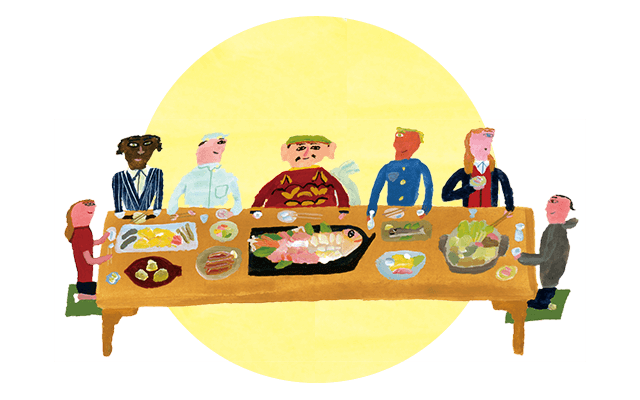
Harima Archives
2022.03.18 The Diverse Specialties of Harima as Seen in History

Soyocho Provides a Hint
Soyocho is a tax system that appears in history textbooks. It was established as a tax system under the ritsuryo legal and administrative system enforced during the Nara (710–784) and Heian (784–1185) periods. The tax was paid in specialties, such as rice, labor, textile products, or processed foods. At the time, Japan was divided into 66 provinces, and each province paid tax. What was paid as tax by each province remains in records, and these records are essential reference materials to learn about the specialties of each region at the time.
What Were Harima’s Specialties?
What did Harima pay as taxes during these times? A list of specialties of Japan’s old provinces in an annex of Nihon Rekishi Daijiten (encyclopedia of Japanese history) gives the following examples of what Harima paid as taxes.
[Textile products, etc.] Ryomen, kyutenra, ikka-aya, futaka-aya, sannka-aya, sho-omu-aya, kureha-ayaha, white silk, red silk, etc.
[Plateware, containers, miscellaneous goods] Ikeyuka, nakayuka, mika, sarake, koyuka, sakatsubo, motai, chitsukeruhotoki, araiban, etc.
[Crops] Straw mats
[Food, marine products, etc.] Salt, rice, naruhajikami, asakura-zansho, zatsukitai, nishio ayu, sushi ayu, soybeans, sesame seeds, azuki beans, chondrus ocellatus holmes algae, green laver, etc.
[Others] Red dirt, paper, thin paper, black kudzu, sesame oil, oil, deerskin, brushes, ink, hemp paper, haizumi, horse skin, cypress
Many of the names of the items are no longer in use, but there are various products such as salt, rice, and soybeans that are still part of Harima’s brewing culture today and fi silk, paper, and brushes. There were an astonishing 93 items listed.
Harima with an Overwhelming Number of Specialties
Based on a theory that 93 items were quite a lot compared to other provinces, the director of the Institute of Harima Studies, Takamichi Nakamoto, tabulated the number of specialties paid as tax in the 66 areas by item, dividing them into textile and other marine products, plate ware and containers, crops, food, and others based on the list of specialties of Japan’s old provinces. This showed that the number of specialty items varied considerably by region. Small areas such as Tsushima and Iki only have 1–5 items, and Mino, Awa, Kii, and Chikuzen have 60–70 items. With 93 specialties, Harima had the highest number in the country. The nationwide average was about 40 specialties, so Harima paid more than twice the average number of items in various products.
A Terrain That Generates an Abundance of Products
From the number of specialties paid as soyocho, we can sense the affluent living and economic strength of the people of Harima. A richly-varied terrain ranging from mountains, rivers, hills, plains, and sea generated various products. Those products encouraged trade and developed a traffic network. The basis of a wealthy Harima, which continues to this day, had already been formed in the Nara to Heian periods.



